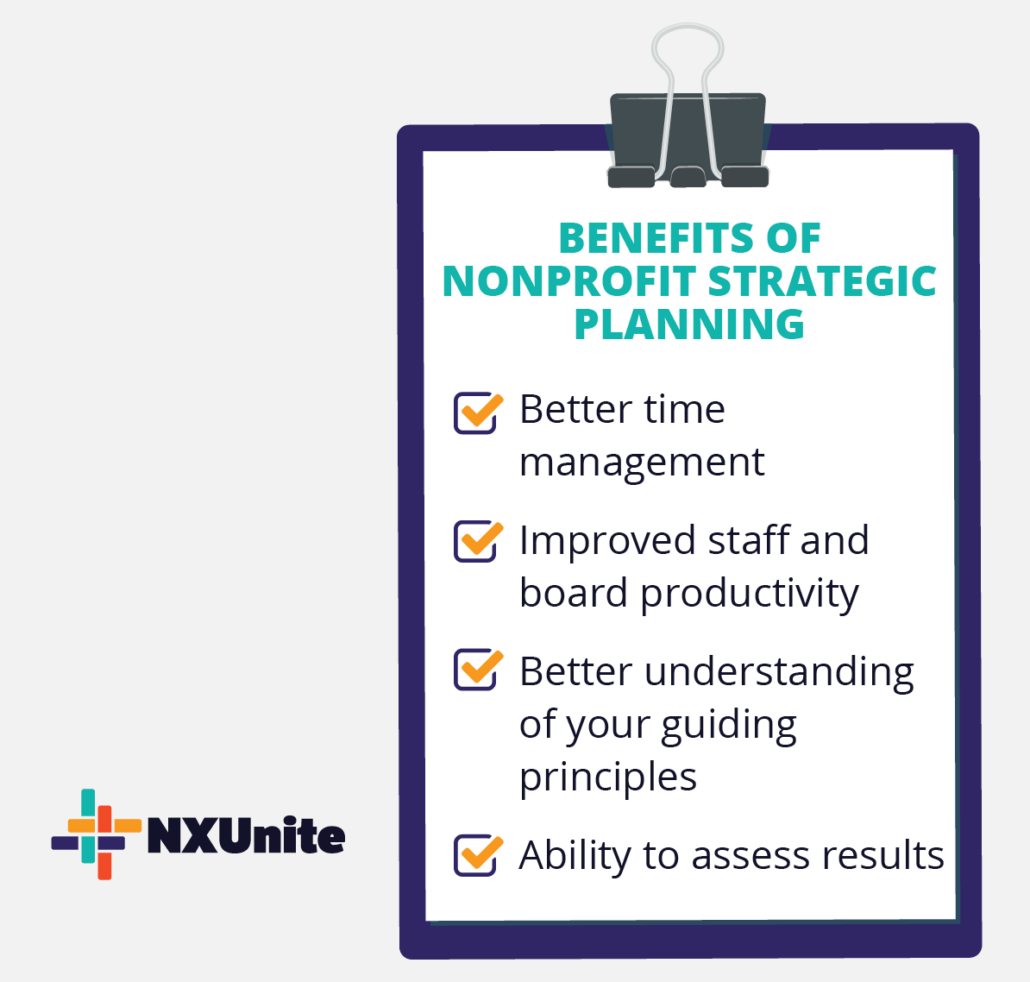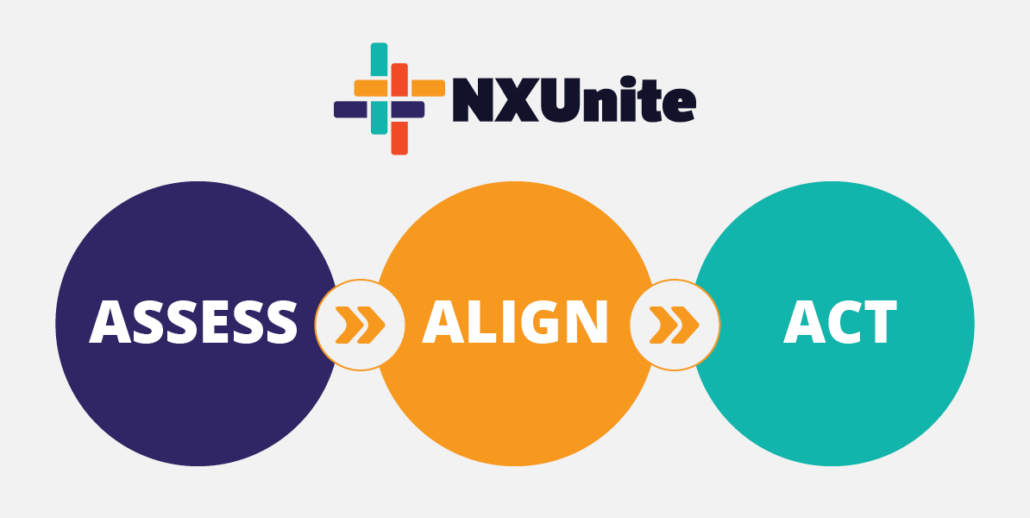Nonprofit Strategic Plan – Nonprofit Catalog
A nonprofit strategic plan gives your organization a roadmap for success. By laying out your goals and the steps to achieve them, you’ll be in great shape to advance your mission. Explore the basics of nonprofit strategic planning so your organization can amp up its fundraising strategy, reenergize board members, or meet any other existing needs.
What is a Nonprofit Strategic Plan?
A nonprofit strategic plan is a bold plan of action that aligns a nonprofit’s goals with its values to provide a dynamic performance map for future endeavors. With this blueprint, your organization will be able to prioritize its most important projects, navigate through any challenges, and keep all of your staff members on the same page.
Ample planning can set your nonprofit up for success in the long-run, allowing you to more effectively meet your objectives and elevate your community impact.

According to Aly Sterling Philanthropy, nonprofit strategic planning can benefit your nonprofit and its team in a variety of ways:
- Better time management. By clearly outlining the tasks that align with your priorities, you’ll spend more time on high-priority responsibilities and less time on extraneous projects that aren’t directly tied to your goals. As a result, each day’s work will be meaningful and impactful in pushing your organization’s mission forward.
- Improved staff and board productivity. A nonprofit strategic plan clearly identifies each member’s responsibilities and projects so everyone has a comprehensive understanding of their roles. Plus, your entire team will know how their efforts contribute to your overarching goals, leading to greater motivation.
- Better understanding of your guiding principles. Consider the values and goals that are important to your organization and outline them clearly in your nonprofit strategic plan. By refocusing your operations on these principles, your nonprofit’s team will rally together to work towards your vision for the future.
- Ability to assess results. Goals give your nonprofit the opportunity to assess whether you’ve reached your objectives and how you can restructure your strategies to enhance your organization overall. In your nonprofit strategic plan, you’ll need to address how you’ll measure results so you can gather important insights and carry out your initiatives with new awareness and direction.
Building your nonprofit strategic plan isn’t a one-person job. Rather, you’ll want to collect a variety of perspectives and include your entire team in the process so everyone can work together towards mutual success. Let’s take a look at the specific steps towards developing an effective strategic plan.
Steps to Create a Nonprofit Strategic Plan
Creating your nonprofit strategic plan takes time, but will give new energy and life to your nonprofit’s staff and overall operations. Use this guide to develop a robust strategic plan that will take your nonprofit to new heights.

1. Assess
In the assess phase, you’ll reflect on what your organization is doing well and where there is room for improvement. For example, your nonprofit may have difficulty raising enough money to support its programs. The strategic area of focus that you’ll want to narrow in on is fundraising, and you might enhance your approach to fundraising by planning more engaging online campaigns.
This reflection process requires all hands on deck, so gather several different viewpoints from your nonprofit’s stakeholders. For example, you can survey your:
- Volunteers and staff
- Current and past board members
- Current major donors
- Beneficiaries
Remember, unfavorable opinions and critiques should be welcomed, as these will lead to unique ideas towards improvement. A nonprofit consultant can help collect unbiased views from each of your stakeholders so you can better understand different perspectives on your nonprofit’s operations and consolidate these into a plan of action.
2. Align
In the align phase, engage your leaders and members in a retreat to discuss their thoughts in an action-oriented forum. This phase helps you align your goals and values so you can prioritize the most important projects and tasks. By determining your high-priority action items, your team can effectively push your goals forward and waste less time on low-impact tasks.
Ensure that your priorities are relevant to your goals. For example, if marketing is an area of improvement for your nonprofit, you might want to prioritize optimizing your nonprofit’s website and social media presence. This ensures that your nonprofit is using its time and resources productively to reach its goals.
3. Act
The act phase is where your strategic plan becomes a fully formed roadmap for success. Following the SMART model (specific, measurable, attainable, relevant, and timely), you’ll need to develop high-level objectives that will allow you to complete your goals. For instance, if your nonprofit wants to enhance its approach to fundraising, you might create an objective to “increase the number of recurring gifts by 20%.”
To carry out your objectives, you’ll also need to outline initiatives. If you’re aiming to meet the objective for increasing recurring gifts, then sending targeted email appeals could be an important initiative. Creating a donor recognition wall could be another way to encourage donors to give again and again.
Create accountability by delegating responsibilities to different team members and laying out deadlines. This ensures that everyone understands their unique role in fulfilling your nonprofit’s strategic plan. Consider hosting weekly or monthly check-in’s so team members can discuss their progress and where they need additional support.
With a robust action plan, your nonprofit will be ready to approach its operations with new clarity and motivation. Work with a consultant to identify areas of improvement and create a tangible plan towards meeting your goals. Each year, take time to reflect on your nonprofit strategic plan and make adjustments as needed to enhance your approach.
Additional Resources
Nonprofit Catalog – Read up on more nonprofit essentials by exploring our Nonprofit Catalog.
Build Your Fundraising Strategy From the Ground Up: 10 Steps – Fundraising is an essential part of powering your nonprofit’s mission. Learn how to create a winning fundraising strategy guaranteed to drive engagement and revenue.
Top 20+ Consulting Firms for Nonprofit Organizations – A nonprofit consulting firm can give your organization the support it needs to develop a strong nonprofit strategic plan. Explore this list of the leading firms and the services they can provide you.


